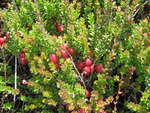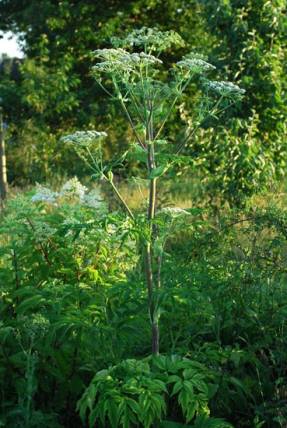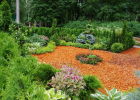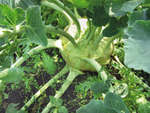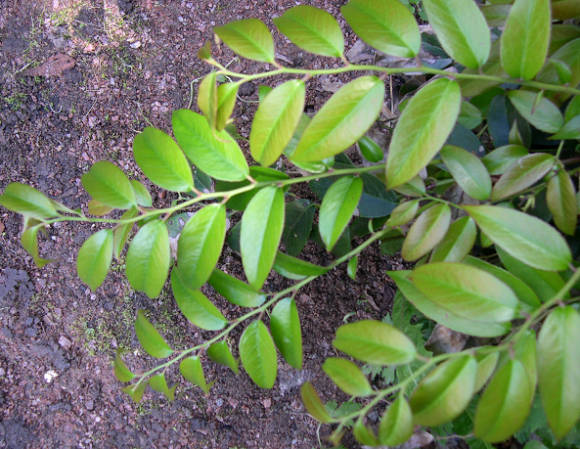Dahlia is a tuberous plant that is always in the spotlight in the garden, because its magnificent flowers, painted in all colors of the rainbow, leave no one indifferent. When a dahlia begins to bloom, it seems that her very soul opens up to meet us. The enchanting flowers of this charming seductress fill the garden space until the end of summer, right up to the first frost.
From the history of dahlias
In 1789, several dahlias were sent from Mexico to the Madrid botanical garden with recommendations to grow these plants for the purpose of eating their tubers - it is clear that such recommendations did not contribute to the popularization of this flower. The fate of this plant changed dramatically when Josephine Beauharnais, wife of Bonaparte, had the whim of filling her entire garden with dahlias. After that, the entire court nobility wanted to have charming flirty dahlias in their garden. We can safely say that dahlia became the most desirable flower of that time. The popularity of this flower grew literally by leaps and bounds, and soon, due to the wide availability of planting material, the dahlia turned from an exclusive flower into a public one. For many years, this flower lady had to be content with such a situation. But fortunately, in our time, the dahlia has been "rediscovered"! And now this lady is again the "hot thing" of any trendy garden.
Dahlia groups
Since the time when the dahlia was rediscovered, many varieties have appeared. They are very diverse in appearance - from small flowers that attract with their graceful simplicity, to huge flowers of stunning color. To be able to navigate this variety of dahlias, they were classified into twelve groups.
 |  |
Anemone dahlias
Cultivars in this group, such as the Polka cultivar, have one or more rows of marginal flowers arranged around the middle, consisting of many smaller petals (reed flowers). Anemone dahlias reach a height of 60-90 cm.
Spherical
The varieties of this group, such as the Jowey Winnie variety, look exactly as the name of this group suggests. Their inflorescences are in the shape of a ball. Each inflorescence consists of tightly packed rolled petals (reed flowers) with a blunt or rounded edge. Globular dahlia bushes easily reach a height of 150 cm!
 |  |
Cactus
Cactus dahlias, such as the Popular Guest cultivar, form double flowers. The inflorescence is filled with petals with pointed tops, reminiscent of cactus thorns. Cactus dahlias can grow up to 150 cm tall.
Semi-cactus
Dahlias of this group, such as "Hy Pimento" (Hy Pimento), form double flowers with pointed petals. The petals are wider and shorter compared to cactus dahlias. Semi-cactus dahlias reach a height of 150 cm.
 |  |
Decorative
Ornamental dahlias, such as the Pink Ribbon variety, form a flat inflorescence filled with broad petals with blunt tops. These dahlias grow up to 150 cm in height.
Large-flowered
The varieties of this group, for example, Babylon Roze, form truly gigantic inflorescences! The diameter of the flowers can be up to 30 cm - larger than the face of an adult. Large-flowered varieties were obtained from ornamental dahlias; both groups are terry. The difference between large-flowered dahlias is the presence of wide and flat reed flowers.
 |  |
Simple
Cultivars of this group, for example the HS Party cultivar, form an inflorescence with one row of petals that surround a flat center of the flower, consisting of very short and vertical petals. The varieties of this group reach 40-60 cm in height.
Collerette
The Collerette varieties, such as the Pooh variety, form flat inflorescences. The core of the flower is surrounded by a row of flat petals and an inner row of vertically positioned petals. The height of this group of dahlias ranges between 75 and 120 cm.
 |  |
Minion
Members of this group, including the Moonfire variety, are similar to simple dahlias, but their flowers are much smaller, 6-10 cm in diameter. Dahlias Mignon are great for growing in pots. Their height is about 50 cm.
Peony
Peony dahlias, such as the Bishop of Canterbury variety, form double buds with rounded petals. As the name of the group implies, these dahlias are similar to peonies. Peony dahlias reach a height of 100 cm.
 |  |
Pompom
The flowers of this group of dahlias, for example in the Little Robert variety, are very similar to the pom-poms worn by dancers from the cheerleading team at sporting events (cheerleaders). Pompon dahlias form globular inflorescences. The petals are rolled inward and have a rounded or blunt top. Pompom dahlias reach 80-120 cm in height.
Nymphae
Dahlias of this group, such as the Nagano variety, have double flowers with flat petals. The slightly rounded tops of the flower petals make them look like water lily flowers. But, nevertheless, these dahlias should be planted in the garden in the ground, and not in the water. Nymphaean dahlias reach 120 cm in height.
Do you know that
- Its Latin name is Dahlia (Dahlia) dahlias were received in honor of the scientist Andreas Dahl, Swedish botanist, student of the famous naturalist Carl Linnaeus.
- Dahlias have been blooming for a long time. Flowering begins in July and lasts until the first autumn frost.
- Tubers, leaves and flowers of dahlias are edible. Taste them, it's worth it! Bright dahlia petals can be used to decorate delicious meals served.
- In their homeland, Mexico, in places of natural growth, dahlias grow up to 6 meters in height.
- There are over 20,000 varieties of dahlia. Not all varieties are available in sufficient quantity, but the figure is still impressive.
- In some varieties of dahlia, the flowers are almost black in color, due to the large amount of anthocyanin pigment in the petals.
- Removing the faded flowers promotes the formation of new buds. This feature makes cutting dahlias twice as pleasant: you always have fresh dahlia flowers in a vase, and even more of them appear in the garden.
Photo iBulb
Based on materials iBulb

